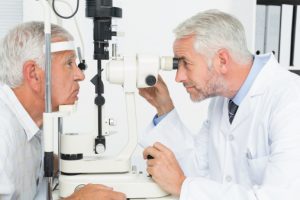
Can’t remember? That’s pretty common. Way too many people are putting themselves at risk of possible vision loss by skipping their routine checkups. They skip a simple appointment that should take no longer than 20 minutes. (According to a recent study, one out of every six adults don’t check their vision regularly.)
Sadly, the only time most of us go for an eye exam is when there’s something seriously wrong with our eyes. Or when we need a prescription for glasses. We rarely go just to check if everything is alright. Some people shun their routine appointments because they think they’d have to wear glasses, and they don’t like that idea.
You may think that as long as you see properly, you should be fine, right?
Wrong.
Almost 50 percent of all patients who go for their first eye checkup after an extended period of time are prescribed glasses. And if left unattended, many treatable problems can progress into more serious conditions and result in damage that is more difficult to treat.
The paradox is, 82 percent of people would love to have perfect vision. More than half of them see eyesight as the most important of all senses. Yet, they don’t place as much importance on regular eye health screening as they do on the quality of their vision. Unfortunately, the two go hand in hand.
Eye health means being proactive
What can you do in 20 minutes? Have a coffee and muffin. Call a friend. Walk your dog. Water your garden. Go for a jog. Make a salad. Do the dishes. Sweep the floor.
There are tons of things you can do in a 20-minute period for yourself, your house, and for other people. So, why not dedicate 20 minutes a year (or even every other year) to your precious eyesight? If it means preventing vision loss in the long term, it should be a no-brainer.
An appointment your optometrist will allow them to detect a condition like a cataract early on while it’s still treatable. It means that other, more serious conditions such as macular degeneration and glaucoma that can lead to vision loss are kept in check.
There are many conditions that need immediate medical attention, surgery even, as is the case of a retinal tear. But the patient may have no idea that something is wrong with their eyes. It’s the doctor who will spot the problem. All you need to do is show up.
According to the National Health Interview Survey, 23.7 million adult Americans struggle with some degree of vision loss. Meaning, they have trouble seeing even when wearing corrective lenses. Come to think of it, that’s a hefty statistic. If all it takes to protect yourself from vision loss is an annual eye checkup, skipping it simply isn’t worth the risk. Along with appropriate sun protection, not smoking, proper use of contact lenses, and use of safety gear when necessary, regular optometrist screening is crucial to preserving your vision for years to come.